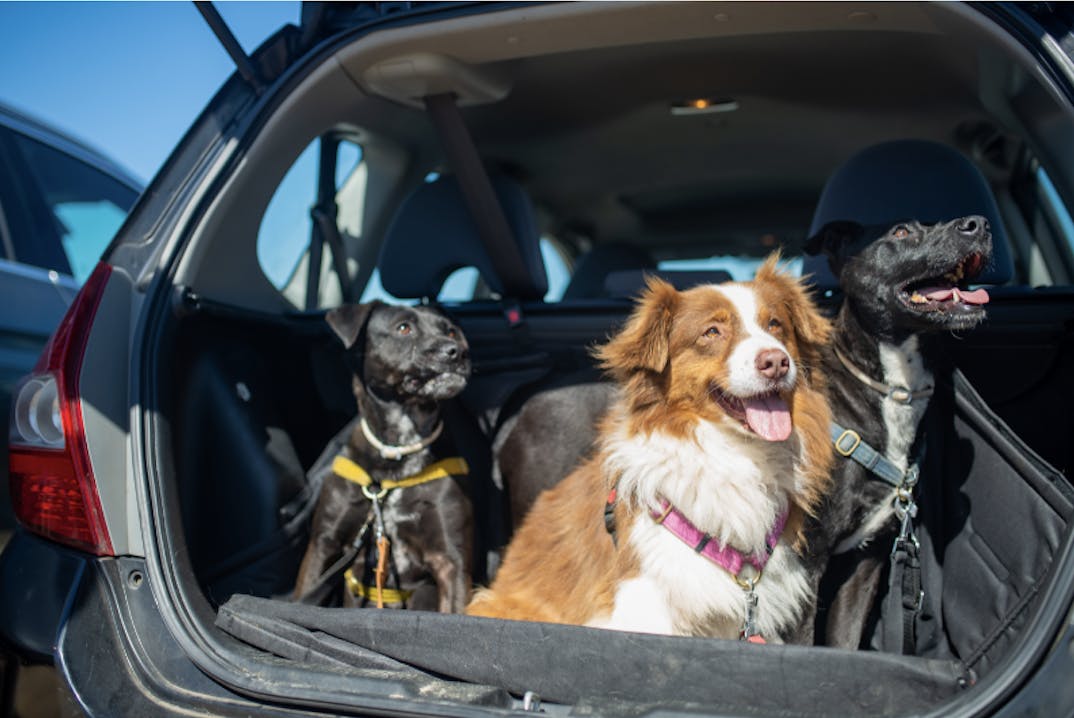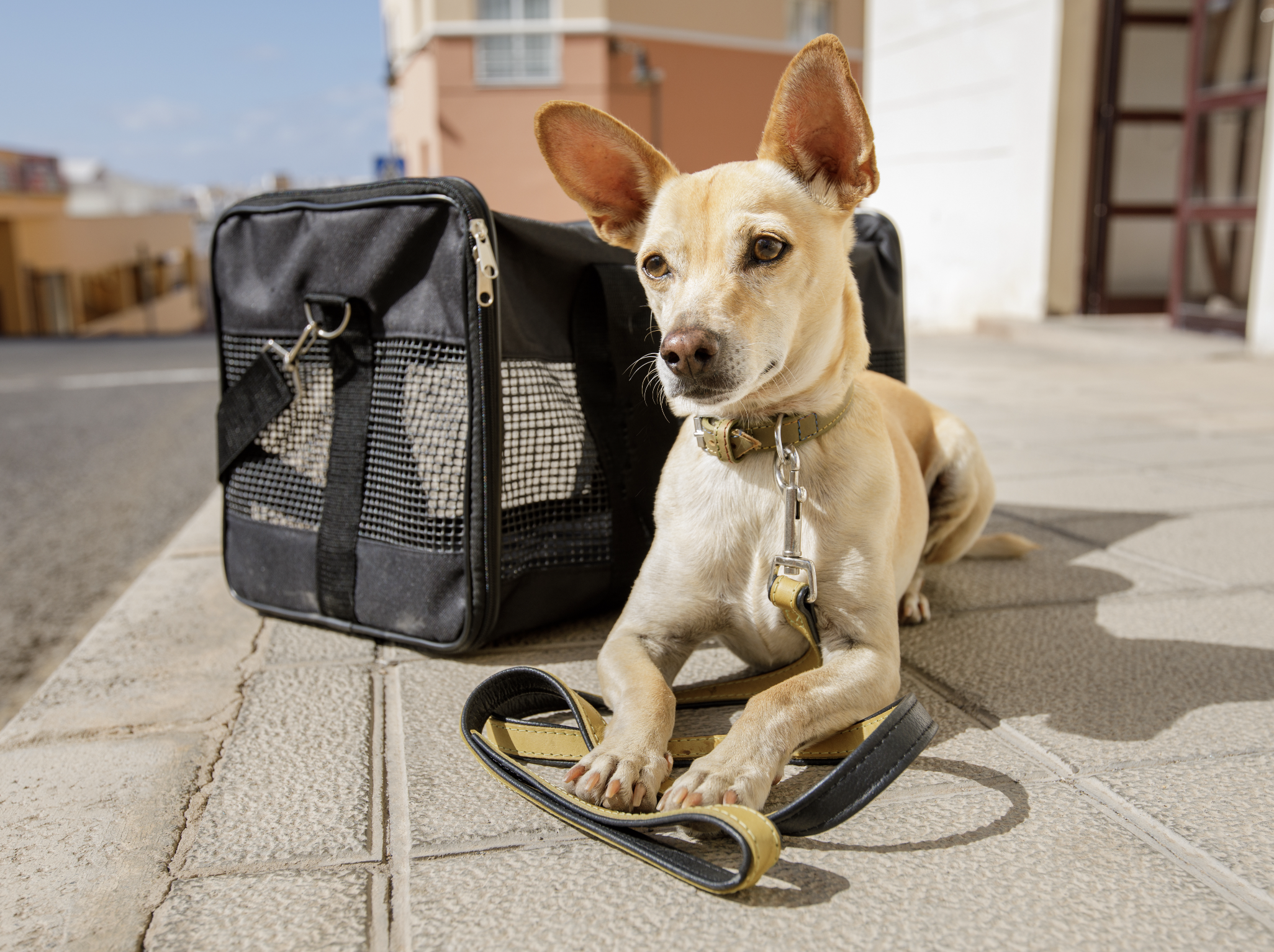By the Good Dog Team –
Whether you’ve already found the dog of your dreams or are just starting your search, at some point you’ll need to know: How will I get my puppy home?
The answer may depend on where you found your new best friend. For example, if you’re working with a local animal shelter or rescue organization*, you are likely to be geographically close to your new pup. If you’re using a Good Dog breeder, however, your search for the perfect dog may have expanded regionally or even nationally. Luckily, many breeders are able to — or know trusted sources who can — transport puppies across the country using a few common methods.
By following this guide and with frequent, open communication with your breeder, shelter, or rescue, you can choose the right mode of transportation to keep your puppy safe and comfortable on the journey home to you.

In-person pick-up
By car
If your breeder, shelter, or rescue is local, the simplest option is to drive to their location to pick up your puppy in person. Some breeders will arrange for assigned pick-up days, where new pet parents can take home their puppy from a specific litter.
If you’re driving a long distance, make sure you know how to keep your puppy safe and comfortable on her first road trip. “You can’t just go to a rest stop and let the dog out [to go to the bathroom] because they could get sick,” said Judi Stella, Good Dog’s head of health standards and research. “The fewer people involved, and the less exposure to other dogs, the better it’s going to be for your puppy.” Bring a puppy go-bag stocked with essentials like poop bags, paper towels, and a water bowl for long drives. (And don’t forget the pee pads!)
When your pup needs a break, avoid busy rest stops and opt to pull over into a parking lot or other area where it will be less likely to be surrounded by other dogs.
By plane
If your breeder, rescue, or shelter is further away and driving isn’t feasible, you can still pick up your puppy yourself by taking a flight. Make a fun trip out of it!
Be sure to check in advance your airline’s rules and regulations for flying with a dog in the cabin. Does your puppy fit in a travel carrier that can slide beneath the seat in front of you? Does your puppy meet the airline’s age restrictions (usually 8-10 weeks of age)? Before you buy a potentially pricey round-trip ticket and pay the $100–150 onboard pet fee, check to ensure your puppy is the right size and age to qualify as the most adorable carry-on ever.

Air delivery
If picking up your puppy in person isn’t possible, many of our breeders offer options to transport your puppy to you by plane safely and comfortably.
Pet chaperone a.k.a flight nanny
A flight nanny acts as your puppy’s chaperone, supervising and taking care of her through the entire journey. Pet chaperones will likely meet your breeder at the airport, carry your puppy through check-in and security, sit with her in the main cabin, and hand her off to you after the flight. Some breeders may serve as the flight nanny themselves, while others send along a trusted friend or family member to play doggy chaperone. Either way, official transporters must be licensed and registered by the USDA, and should also be insured. Your dog’s breeder will be able to walk you through all your options.
Melissa Grant, a Good Dog care specialist, has been a flight nanny for new pet parents and has also flown with her own dog, Lily, many times. “You might think flying is a little stressful for your puppy, but with a flight nanny, they’re kept very comfortable,” she said. In Grant’s experience, puppies she’s transported have fallen asleep during flights, but air travel can be scary for other dogs, so look out for signs that he or she is in distress, like trembling or excessive panting. Work with your breeder and/or veterinarian ahead of time to come up with an anti-stress game plan.
As you’d expect, this special service costs extra. Along with round-trip airfare and onboard pet fees, expect to compensate a flight nanny for her time, especially for longer trips.
Pet-safe air cargo
If a flight nanny isn’t feasible for financial or other reasons, or if your dog is too large to travel in the main cabin, most airlines can transport your puppy in the plane’s pet-safe cargo area. This special animal-only area in the hull of the plane is pressurized and temperature controlled, so it’s perfectly safe for dogs. Airlines also have restrictions in place when temperatures fall above or below safe levels for dogs to fly.
“I always let new puppy owners know that airlines have come a really long way in ensuring that dogs are kept very comfortable,” Grant said. “They’re treated as really special cargo.”
Your puppy will be able to move around in her hard-sided crate (with attached food and water dishes) during the flight. That’s more than can be said for most human travelers where leg space is at a premium!
Again, it’s important to know your airline’s rules and regulations when transporting your puppy via pet-safe air cargo. Some breeds, including brachycephalic (short, snub-nosed) dogs like French bulldogs and strong-jawed dogs like chow chows or mastiffs, aren’t typically allowed to fly in cargo due to health reasons or airline breed restrictions.
You should have access to tracking information for your puppy’s flight so you can monitor its progress and time your arrival just right. Remember to bring a valid ID that matches the paperwork provided by your breeder when you finally meet your puppy at the airport’s cargo pick-up desk.
Some breeders are careful to only book direct flights for their puppies, because not even dogs like layovers. Airlines have systems in place to help your puppy move easily from one plane to another, with a much-deserved break in a temperature-controlled room, so they’re never sitting alone on a plane or exposed to the elements.
As mentioned above, though, this can still be a stressful experience for dogs, especially puppies. Stella said that pet-safe air cargo is her “least favorite option for the little guys,” or toy-breed puppies, “but it’s a little safer as they get older.” She stresses that the most important thing is to minimize puppies’ stress while in transit. Having your puppy shipped in the same crate to which the breeder has acclimated her, and traveling with a blanket or DAP spray, a dog appeasing pheromone, that has the scent of her mom and littermates, can help.
All told, transporting your puppy by pet-safe air cargo can cost $200–500 — less expensive than hiring a flight nanny, to be sure — but the professional care and peace of mind can be worth every penny.

Ground delivery
Having your puppy shipped by ground transportation is less common than by air, since long drives aren’t easy on young dogs. “What’s important is to prepare them as best you can for the transportation experience,” Stella said, “and to minimize the amount of time they’re in that situation.” In other words: The less time your puppy spends in transit, the better.
That said, if a breeder is nearby, they may opt to deliver your puppy themselves by a car or van. They may ask to be compensated for the trip, but a safe and comfortable ride with an expert is well worth it.

0 Comments